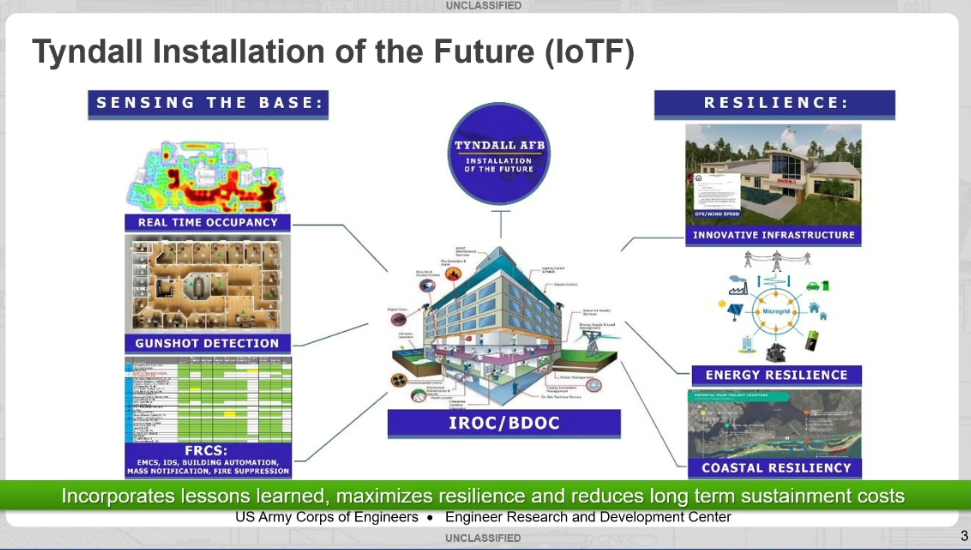By KELSEY ATHERTON

FORT CARSON, Colo. — Two Polaris GEM automated shuttles, custom-configured by Perrone Robotics using their TONY (TO Navigate You) autonomy kit, will operate as Fort Carson post shuttles beginning in mid-September. (Courtesy photo)
ALBUQUERQUE: Data-driven “Smart Cities” networks could make Army bases more efficient, safe, and livable — but the Army needs to make sure they aren’t as vulnerable to cyber attack as civilian Internet of Things technologies have proven to be.
“Our installations are not a safe haven,” said Andrew Nelson, director of the Army Engineer Research and Development Center’s International Research Office in London, at an AFCEA NOVA conference today. “Particularly as we incorporate more technology and smart-cities infrastructure, we’re introducing vulnerabilities to the installation via cyber-physical threats we previously haven’t had to deal with.”
Acknowledging the risks from the start is crucial if the Army is to proceed with its new Installations Strategy, which was published in December 2020 and emphasizes the risk that stateside bases will be attacked. It’s much easier to build safeguards in from the beginning than to try to bolt them on after the fact.
The Army Installations Strategy leans heavily on Internet of Things technologies, which collect data about people, machines, and climate around them, and then make that data accessible. The ultimate goal, as emphasized by both Nelson and in the strategy documents, is to improve base life so as to better support multi-domain operations.
“At the same time we’re introducing new capabilities, new information, new data streams, that we can utilize in ways to improve the ways we operate our installations in ways we are able to provide our installations in terms of training and force projection from installations,” said Nelson.
For now, the Army is working on pilot programs, like the Virtual Testbed for Installation Mission Effectiveness (VTIME), which will gather existing data streams and offer them in a useful virtual console. The data will cover everything, from mold detection to building energy use and water treatment, to possible accommodation for autonomous vehicles. The console will give garrison commanders a tool that allows them to understand and assess risk to a base for everything from environmental health to explosive blasts.

When the Air Force rebuilt Tyndall Air Force Base, it did so with sensors and smart city tech in mind, an experience the Army hopes to draw from.
Beyond the basics of health and security, a SmartCities approach to data is designed to make life in the service and on-base appealing to people entering the All-Volunteer Force from civilian life, with a new generation of “digital natives” bringing different expectations for technology.
“Future Soldiers will expect installations to modernize at pace with civilian sector smart cities initiatives,” reads the Army strategy. “Opportunities that leverage technology through creation of data-informed, smart installations will allow the Army to pivot from an industrial-age paradigm, characterized by rigidity and purpose-built specialization, to a data-rich, reconfigurable, and technology-enhanced information-age construct.”
Crucial to this entire project is network security, which will allow the smooth functioning of on-base sensors and the long-reaching deployments of cyber effects from Army bases.
“The end state is this modern and resilient army, and sustainable installations that enhance readiness and position us for that MDO [Multi-Domain Operations] battlespace that we understand,” said Nelson.
No comments:
Post a Comment